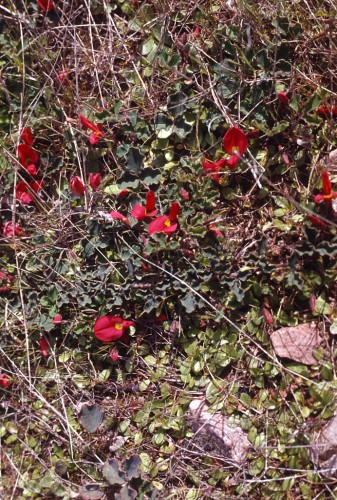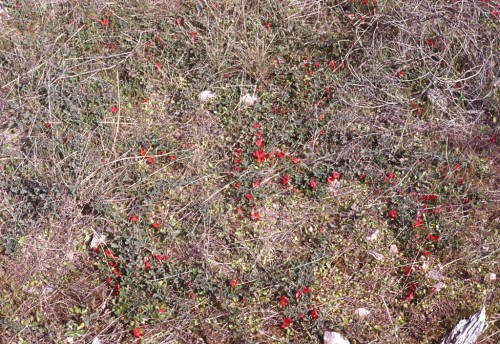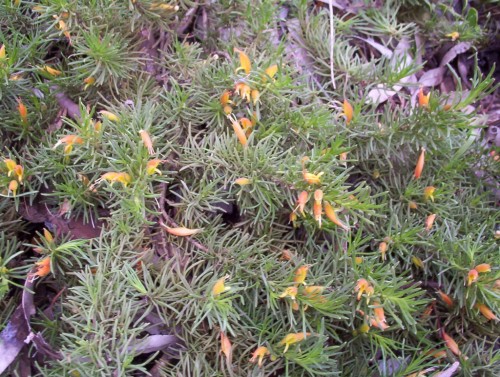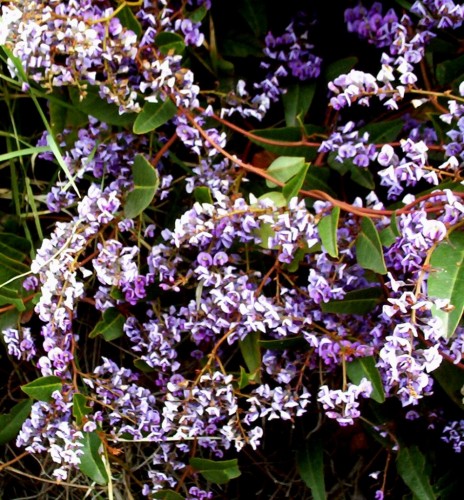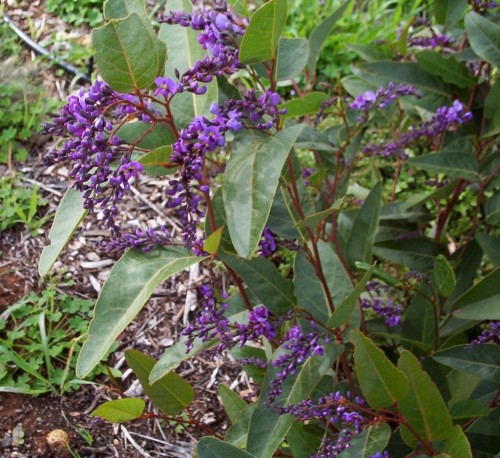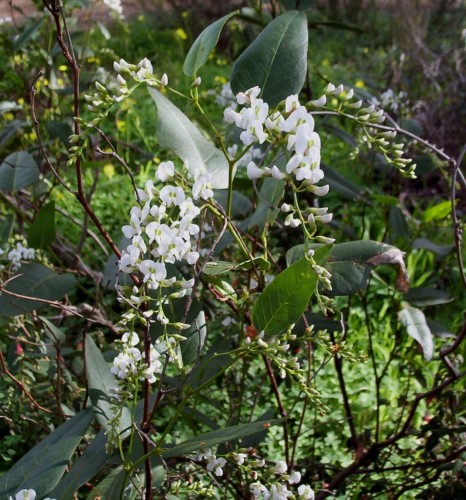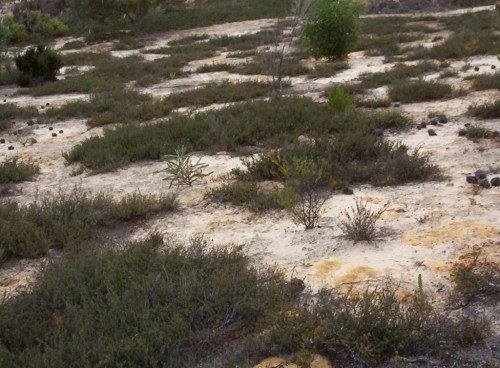Kennedia prostrata (Running Postman)
This species grows in acid to alkaline conditions, is moderately frost tolerant, and can be trimmed if necessary. It flowers from winter through to early summer, depending on the area. More information can be found here and here.
Eremophila subteretifolia
When I first began growing Eremophilas (Emu Bushes) I tried those that were considered to be hardy and available through plant sales put on by the Australian Plants Society. 20 years ago there were not many species in the nursery trade.
Eremophila subteretifolia is ground cover plant covering about 3 metres and with the occasional branch rising to about 25 cm. It is mostly quite prostrate and has a cascading effect on embankments. It is not a vigorous plant so is easily contained to an area. This is another of those ground covering plants which could be used as a substitute lawn where it would not be walked over.
This species is very drought tolerant and frost hardy.
The plant has orange tubular flowers which are enjoyed by Honeyeaters, particularly Red Wattle Birds and New Holland Honeyeaters.
Hardenbergia violacea (Native Wisteria)
When a plant is as dense as this one is, some hedge clippers would probably do the pruning very well.
Although the flowering time is limited to about 2 months at the most, the creeper on the fence stays green and dense for the rest of the year.
There are white and pink forms of this plant. The pink is particularly pretty but does not seem to be as robust as the others.
